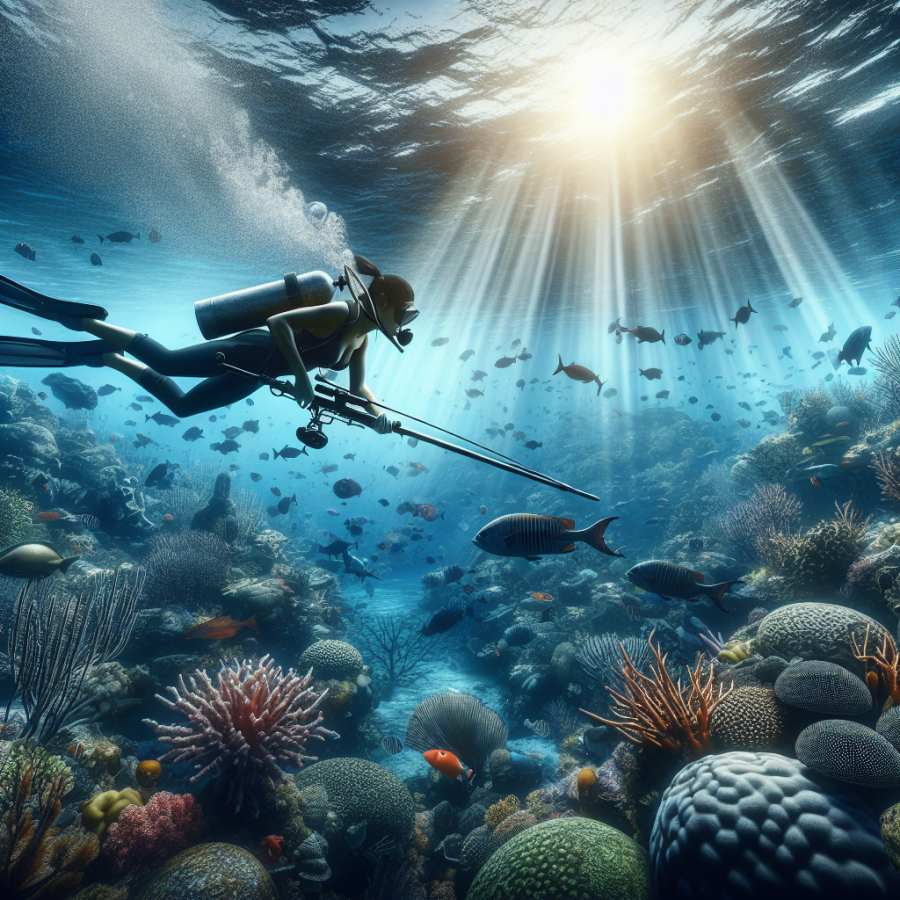Mastering the Basics: Essential Equipment and Techniques for Successful Spearfishing
Setting out to spearfish without the proper equipment or knowhow is a recipe for frustration. Mastery of essential spearfishing equipment and practical techniques dramatically increase your chances of fruitful dives. In this article, we will cover some primary tools, and tips for effective spearfishing.
When it comes to equipment, the main categories include spearguns, pole spears, dive gear, and accessories. Mastering these essentials should equip you to navigate the depths efficiently.
Spearguns and Pole Spears: Spearguns, the primary weapon in spearfishing, come in different lengths and configurations suitable for different underwater environments and types of fish. Band spearguns are the most common type used by recreational spearfishers because of their simplicity, reliability, and quiet operation. Pole spears, on the other hand, enable the angler to get closer to the target but require more refined stalking technique due to their limited range.
Dive Gear: Complete spearfishing dive gear includes a wetsuit, mask, fins, snorkel, weight belt, gloves, and dive knife. Wetsuits are made in a range of thicknesses to suit different water temperatures. A good fitting, low volume mask is essential for clear underwater vision, while long fins allow for efficient and quiet swimming. The rest of the diving equipment is crucial for safety, functionality, and camouflage.
Additional Accessories: Spearguns or pole spears often need a float line or reel for spear retrieval. A dive buoy can signal your location to boat traffic and provide storage for your catch. You may also need a stringer to tether your fish and dive lights for night or cave diving.
As for the techniques, adaptive diving, spotting and approaching prey, and the act of spearing, are critical for successful spearfishing.
Adaptive Diving: Depth adaptation involves learning to equalize your ears, mask, and suit as you dive deeper. Free-diving techniques such as the Frenzel maneuver get more critical with depth. Regular practice should help you become comfortable with deeper dives over time.
Spotting and Approaching Prey: Understanding fish behavior is crucial in tracking your target. Learn to recognize different fish species and their habits. Avoid frantic movements, and remember that patience and slow swimming pay off in spearfishing.
The Act of Spearing: Depending on your weapon choice, your spearing technique may involve loading, aiming, and firing a speargun or launching a pole spear with hand thrust.
Read also:
Navigating the Waters: A Comprehensive Guide to Kayaking for Beginners
Dive Deeper: Advanced Strategies and Tips for Spearfishing Enthusiasts
Spearfishing can be a challenging yet rewarding sport, requiring a combination of swimming skills, knowledge about marine life, and hunting techniques. If you're an enthusiast looking to dive deeper into this thrilling practice, here are some advanced strategies and tips to help you enhance your spearfishing experience.
Knowledge about Tides and Currents: Understand the impacts of tides and currents on the movements and behaviors of marine life. Some species are more active during specific tidal flows, increasing your chances of a successful catch. Having awareness about the water conditions can also keep you safe during your dives.
Mastering the Art of Camouflage: Enhance your ability to blend into the underwater landscape. Using proper diving gear with colours that mix with the ocean bed can improve your chances of coming up close to your targets without startling them.
Perfecting Aspetto Technique: Aspetto, or the "waiting technique", involves the diver waiting for the fish to come into range rather than actively pursuing them. This technique requires patience and the ability to stay calm and motionless in water, but it could increase your successful catch rate.
Increasing Breath-Hold Capacity: This is a skill that comes with time and practice. Increasing your breath-hold time helps you dive deeper and stay underwater for longer periods. Regular breath-hold exercises and proper relaxation techniques can help to improve this vital skill.
Proper Equipment Handling: Ensuring your speargun is well maintained will not only improve its lifespan but minimize the chances of a misfire or other malfunction. Regular checks and cleaning of your gear, especially after saltwater usage, is crucial.
Placement of the Shot: An effective spearfisher knows that aim and precision matter more than power. Shooting in the correct spot ensures a quick and ethical kill. Usually, aiming just behind the gills ensures a direct hit to vital organs, making it a successful catch.
Learning Underwater Communication: Learning to communicate with your dive buddy underwater significantly increases the safety and success of your dive. Dive signals also help in coordinating attacks and sharing information about fish locations.
Understanding Ocean Topography: Familiarizing yourself with the underwater terrain such as reefs, drop-offs, and other structures, can help you predict the movement of fish and increase your hunting efficiency.
Night Dives: For a real challenge, try spearfishing at night. Many fish rest close to reefs or shore at night, which can present unique opportunities for spearfishing.




